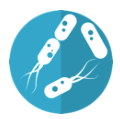“What is the commonality that drives communication from humans all the way down into bacteria?”
An Interview with Kevin Zollman, PhD
Associate Professor of Philosophy, Carnegie Mellon University
By Michelle Johnson (December 7, 2018)
What did you want to be when you grew up?
My parents are both professors—my father’s in physics and my mother’s in education—and I had a close friend who was a philosophy professor’s son. I went home one day at 10 or 11 and said to my dad, “Okay, I understand what physicists do, they do experiments, and I understand what education professors do, they learn about teaching…what do philosophers do?” And tongue in cheek, joking, my father says, “Nothing. They sit around and read magazines all day.” And I like to say that that’s when I wanted to become a philosophy professor.
That last part was not quite true, but it was definitely that moment when I began to realize that there was research broader than just doing things with your hands and that involved more intellectual activities. From that point forward, I became interested in architecture, law, and then philosophy. At the same time, I started playing poker and became interested in its mathematical underpinnings. Then my undergraduate advisor said, “Hey, you know, there are philosophers who also use the same mathematics with which you can understand poker.” And that was the moment where I was like, “Oh, that’s what I want to do.”
What kinds of research questions are on your mind right now?
One of the amazing things that biologists have uncovered is that communication is not a human-only thing: animals communicate, plants communicate, even bacteria communicate with one another. And so, there’s this question: is communication something that goes all the way across the biological spectrum? How did that come about? If it’s not unique to humans, we can’t give a story about communication that relies on complicated mental activities or social behavior because we’re dealing with
How did that come about? If it’s not unique to humans, we can’t give a story about communication that relies on complicated mental activities or social behavior because we’re dealing with  single-celled organisms. The explanation for how communication comes about has to also be simple. What I want to do is try and come up with that fundamental explanation. What is the commonality that drives communication from humans all the way down into bacteria?
single-celled organisms. The explanation for how communication comes about has to also be simple. What I want to do is try and come up with that fundamental explanation. What is the commonality that drives communication from humans all the way down into bacteria?
What has your experience been working with people from other fields with different motivations?
Different people are motivated in really different ways. There are scientists that really love the broad connections and really love to see these commonalities and build up together. That’s one type of scientist. And then there are other types of scientists who instead find a problem, and they want to drill all the way down—they want to know everything there is to know about that one thing. And I don’t think there’s a right and a wrong way to do science. I think that science succeeds precisely because you have people of both kinds.
What’s the best piece of advice you ever received?
The world is complicated, and what my PhD supervisor always said was to focus on how you can find a simple concept or theory which really gets to the core problem and then see how much you can do with it. So always start with the simple and build out from that. When you make something simple, you can really come to understand it, and that can go a long way.
To learn more about Dr. Kevin Zollman and his work, click here.
Click here to go back to the “Interviews with Scientists” page.
